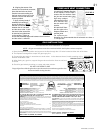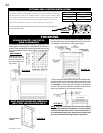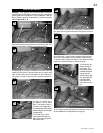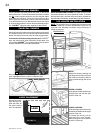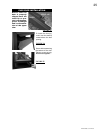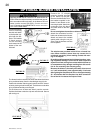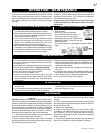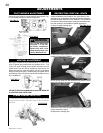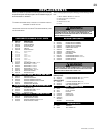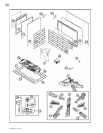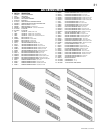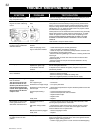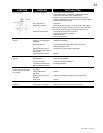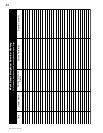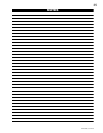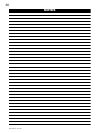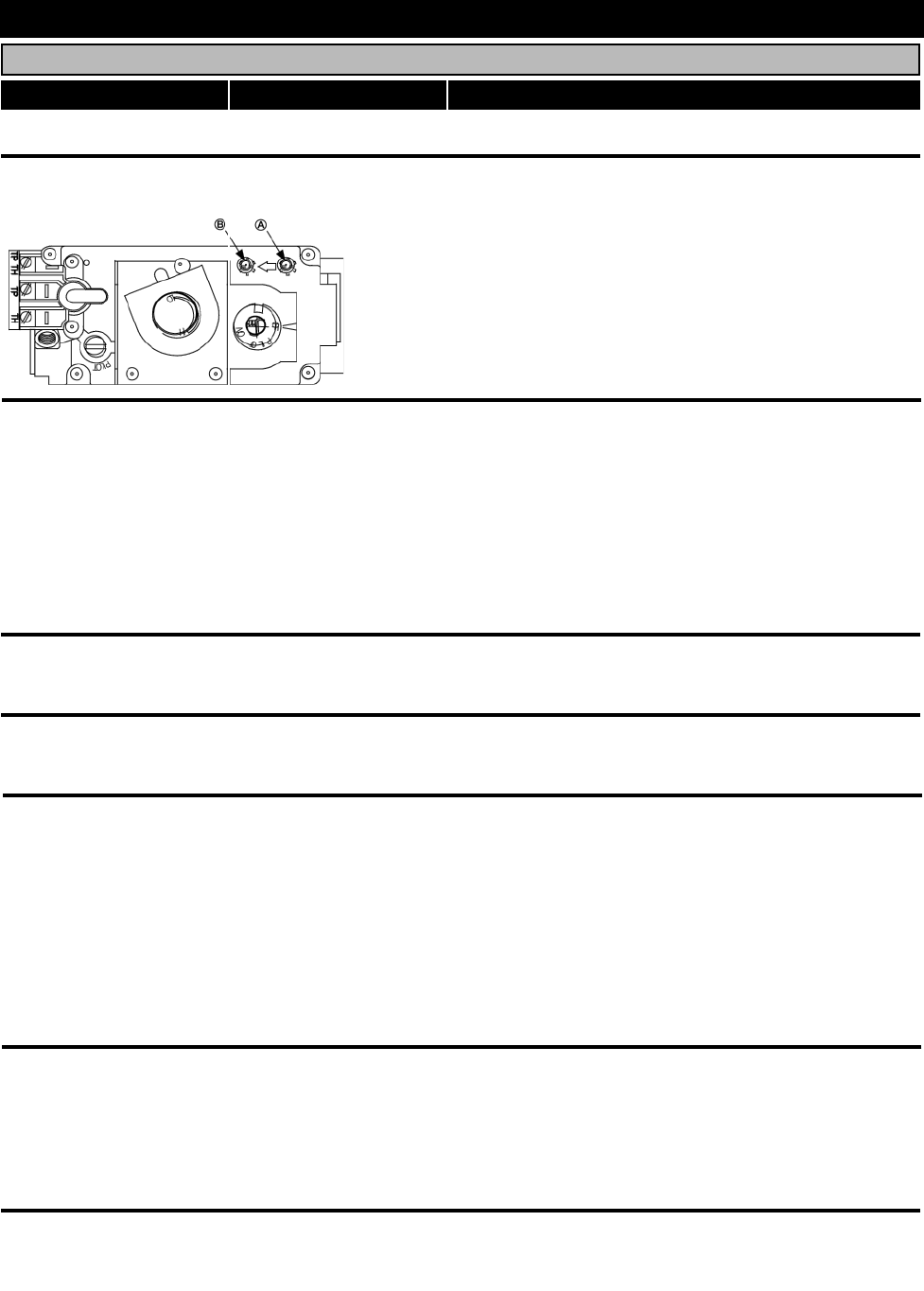
32
W415-0299 / J / 04.14.08
TROUBLE SHOOTING GUIDE
BEFORE ATTEMPTING TO TROUBLESHOOT, PURGE YOUR UNIT AND INITIALLY LIGHT THE PILOT AND THE MAIN BURNER WITH THE GLASS DOOR OPEN.
SYMPTOM PROBLEM TEST SOLUTION
Main burner fl ame is a blue,
lazy, transparent fl ame.
Blockage in vent. - Remove blockage. In really cold conditions, ice buildup may occur
on the terminal and should be removed as required.
Flames are consistently too
large or too small. Carboning
occurs.
Unit is over-fi red or under-
fi red.
- Check pressure readings:
Inlet pressure can be checked by turning screw (A) counter-clock-
wise 2 or 3 turns and then placing pressure gauge tubing over the
test point. Gauge should read 8" (minimum 4.5") water column for
natural gas or 13" (11" minimum) water column for propane. Check
that main burner is operating on "HI".
Outlet pressure can be checked the same as above using screw (B).
Gauge should read 3.5" water column for natural gas or 10" water
column for propane. Check that main burner is operating on "HI".
AFTER TAKING PRESSURE READINGS, BE SURE TO TURN
SCREWS CLOCKWISE FIRMLY TO RESEAL. DO NOT OVER-
TORQUE.
Leak test with a soap and water solution.
Carbon is being deposited
on glass, logs or combustion
chamber surfaces.
Air shutter has become
blocked
- Ensure air shutter opening is free of lint or other obstructions.
Flame is impinging on the
logs or combustion chamber.
- Check that the logs are correctly positioned.
- Open air shutter to increase the primary air.
- Check the input rate: check the manifold pressure and orifi ce size
as specifi ed by the rating plate values.
- Check that the door gasketing is not broken or missing and that the
seal is tight.
- Check that both 5" and 8" vent liners are free of holes and well
sealed at all joints.
- Check that minimum rise per foot has been adhered to for any
horizontal venting.
White / grey fi lm forms. Sulphur from fuel is being
deposited on glass, logs
or combustion chamber
surfaces.
- Clean the glass with a recommended gas fi replace glass cleaner.
Do not clean glass when hot!
If deposits are not cleaned off regularly, the glass may become
permanently marked.
Exhaust fumes smelled in
room, headaches.
Fireplace is spilling. - Check door seal and relief fl ap seal.
- Check for chimney blockage
- Check that chimney is installed to building code.
- Room is in negative pressure; increase fresh air supply.
Pilot goes out when the gas
knob is released.
The gas valve has an inter-
lock device which will not
allow the pilot burner to be lit
until the thermocouple has
cooled. Allow approximately
60 seconds for the thermo-
couple to cool.
System is not correctly
purged.
- Purge the gas line with a glass door open.
Out of propane gas. - Fill the tank.
Pilot fl ame is not large enough - Turn up the pilot fl ame.
Pilot fl ame is not engulfi ng the
thermocouple.
- Gently twist the pilot head to improve the fl ame pattern around the
thermocouple.
Thermocouple shorting /
faulty.
- Loosen and tighten thermocouple.
- Clean thermocouple and valve connection.
- Replace thermocouple.
- Replace valve.
Faulty valve. - Replace.
Pilot burning; no gas to main
burner; gas knob is on 'HI';
wall switch / thermostat is on.
Thermostat or switch is
defective.
- Connect a jumper wire across the wall switch terminals; if main
burner lights, replace switch / thermostat.
Wall switch wiring is defec-
tive.
- Disconnect the switch wires from the valve & connect a jumper
wire across terminals 1 & 3; if the main burner lights, check the
wires for defects and / or replace wires.
Main burner orifi ce is plugged. - Remove stoppage in orifi ce.
Faulty valve. - Replace.
Pilot goes out while stand-
ing; Main burner is in 'OFF'
position.
Gas piping is undersized. - Turn on all gas appliances and see if pilot fl ame fl utters, dimin-
ishes or extinguishes, especially when main burner ignites. Monitor
appliance supply working pressure.
- Check if supply piping size is to code. Correct all undersized piping.



